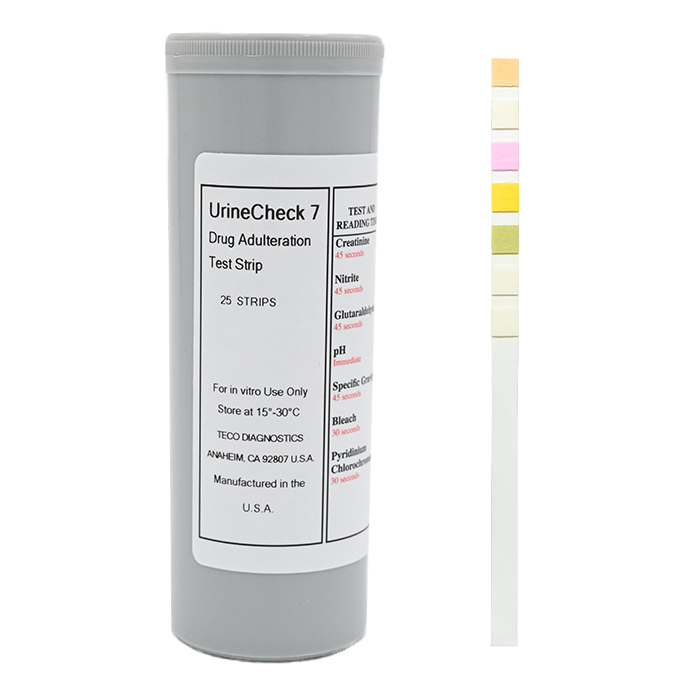
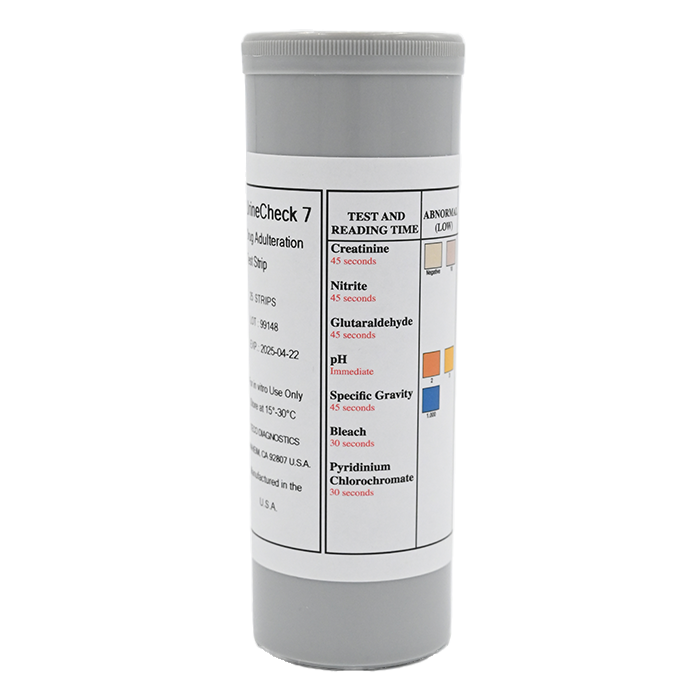
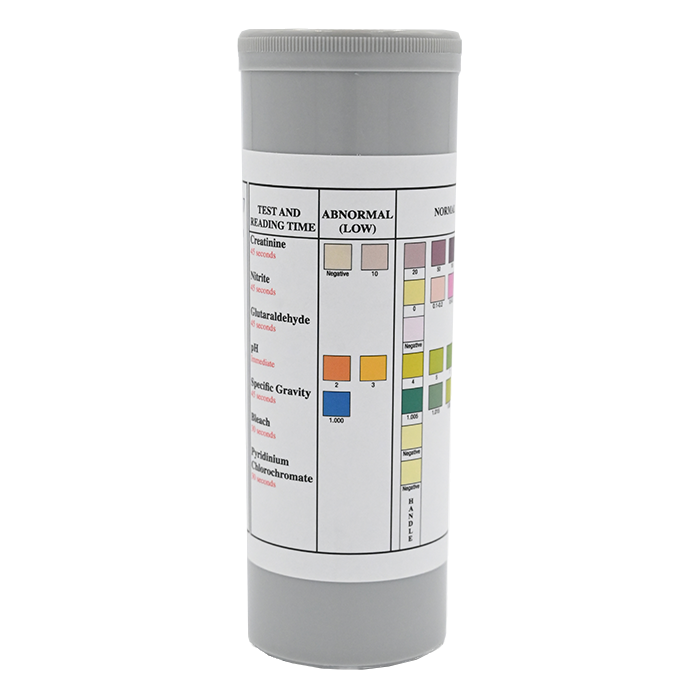
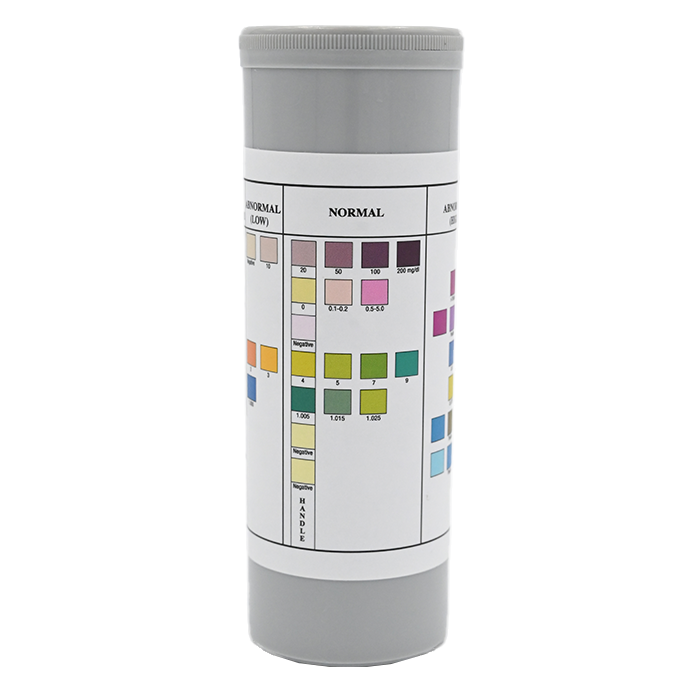
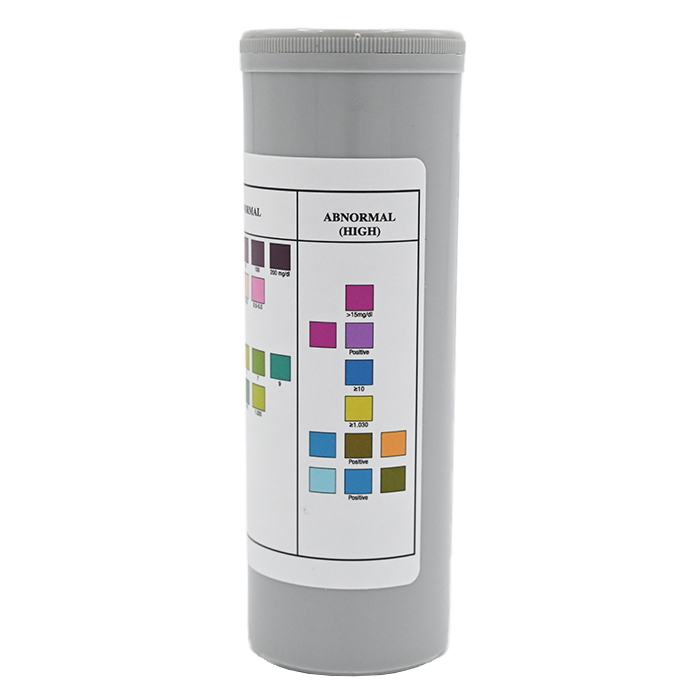
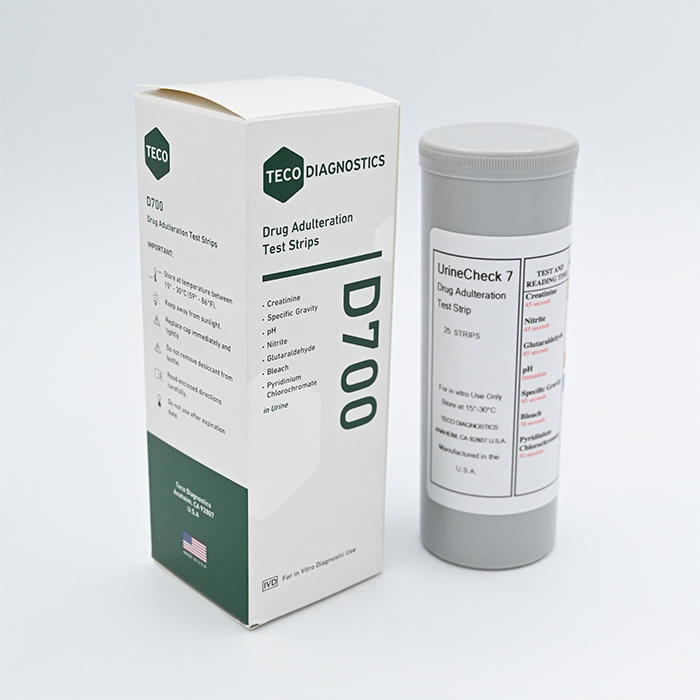






The Urine Adulteration Test Strip is a rapid, semi-quantitative, dip-and-read test for the determination of Creatinine, Nitrite, Glutaraldehyde, pH, Specific Gravity, Oxidants and Pyridium Chlorochromate in urine specimens, to assess the integrity of a urine sample prior to drug screening. It is intended for in vitro use only. Results are interpreted by visually comparing the color of each pad with the corresponding test color block pictured on the container label.
- Test Strips
- Product Insert
The Urine Adulteration Test Strip is a rapid, semi-quantitative, dip-and-read test for the determination of Creatinine, Nitrite, Glutaraldehyde, pH, Specific Gravity, Oxidants and Pyridium Chlorochromate in urine specimens, to assess the integrity of a urine sample prior to drug screening. It is intended for in vitro use only. Results are interpreted by visually comparing the color of each pad with the corresponding test color block pictured on the container label.
Adulteration is the tampering of a urine specimen with the intention of altering the test results. The use of adulterants can cause false negative results in drug tests by either interfering with the screening test and/or destroying the drugs present in the urine. Dilution may also be employed in an attempt to produce false negative drug test results.
One of the best ways to test for adulteration or dilution is to determine certain urinary characteristics such as Creatine, pH, and Specific Gravity and to detect the presence of Glutaraldehyde, Nitrite and Oxidants/Pyridinium Chlorochromate in urine.
Creatinine (CRE): Tests for specimen dilution. Creatinine is a waste product of Creatine and is an amino acid contained in muscle tissue and found in urine.[1] A person may attempt to foil a drug test by drinking excessive amounts of water or diuretics such as herbal teas to flush the system. Creatinine and Specific Gravity are two ways to check for dilution and flushing, which are the most common mechanisms used to circumvent drug testing. Low Creatinine and Specific Gravity levels may indicate diluted urine. The absence of Creatinine (<5 mg/dL) is indicative of a specimen not consistent with human urine.
Nitrite (NIT): Tests for commonly used commercial adulterants. They work by oxidizing the major cannabinoid metabolite THC-COOH.[2] Normal urine should contain no trace of Nitrites. Positive results generally indicate the presence of an adulterant.
Glutaraldehyde (GLUT): Tests for the presence of aldehydes. Adulterants can contain Glutaraldehyde and can cause false negative screening results by disrupting the enzyme used in some immunoassay tests.[3] Glutaraldehyde is not normally found in urine; therefore, detection of Glutaraldehyde in a urine specimen generally indicates adulteration.
pH: Tests for the presence of acidic or alkaline adulterants in urine. Normal pH levels should be in the range of 4.0 to 9.0. Values outside of this range may indicate that the specimen has been altered.
Specific Gravity (SG): Tests for specimen dilution. The normal range is from 1.003 to 1.030. Values outside this range may be the result of specimen dilution or adulteration.
Oxidants/Pyridinium Chlorochromate (OXI/PCC): Tests for the presence of oxidizing reagents such as bleach and hydrogen peroxide. Pyridinium Chlorochromate is commonly used adulterant.[3] Normal human urine should not contain Oxidants or PCC.
Results are interpretated via comparison to the colour chart provided on the container.
1. Baselt RC. Disposition of Toxic Drugs and Chemicals in Man. 2nd ed. Davis: Biomedical Publications; 1982.
2. Hawks RL, Chiang CN, eds. Urine Testing for Drugs of Abuse. Rockville: Department of Health and Human Services, National Institute on Drug Abuse; 1986.
3. Substance Abuse and Mental Health Services Administration. Mandatory Guidelines for Federal Workplace Drug Testing Programs. 53 Federal Register; 1988.
- Please note that certain products may only be available in specific regions; kindly consult with a sales representative for further information regarding product availability.
- The information provided on this website is for educational purposes only and should not be construed as medical advice. Always consult with a qualified healthcare professional regarding any medical concerns or conditions.
- Our products are intended for use as specified in the product documentation. It is important to carefully read and follow all instructions provided with the product.
